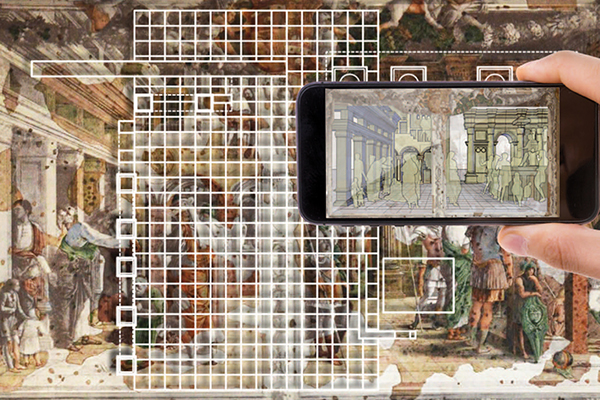Immagini “assenti”: gli affreschi di Andrea Mantegna a Padova
DOI:
https://doi.org/10.15168/xy.v4i7.130Abstract
La Chiesa degli Eremitani di Padova è luogo di indiscusso valore culturale, storico e frequentata meta turistica perché accoglie nella Cappella Ovetari (1448–1457) il celebre ciclo pittorico dedicato alle storie di San Giacomo e di San Cristoforo, opera, a partire dal 1448, di un gruppo di artisti tra cui un giovanissimo Andrea Mantegna. Il valore artistico di questo luogo in quanto documento della pittura rinascimentale e altresì testimonianza dello sperimentalismo prospettico intrapreso dal Mantegna in quegli anni è materia ampiamente studiata; va però ricordata la particolarità di questo luogo, oggi parzialmente “assente”, perché fisicamente con consistenti lacune a seguito del bombardamento subito durante il secondo conflitto mondiale e successivamente oggetto di un difficile restauro. Quello che il fruitore può ammirare oggi è una ricostruzione parziale degli affreschi tesa più alla narrazione delle assenze che alla ricostruzione (forse impossibile) delle migliaia di frammenti raccolti. Un recente studio, avviato grazie al Fondo Sociale Europeo, ha riaperto il dibattito sulle modalità di conservazione e trasmissione della memoria alla luce delle possibilità offerte dalle nuove tecnologie digitali. Pensare a uno strumento divulgativo, nello specifico la progettazione di una app multimediale per un pubblico per lo più in età scolare, insieme alle finalità di conoscenza e comunicazione, diventa occasione per una riflessione sulle potenza delle immagini che le dinamiche del mondo contemporaneo ci impongono, vincolate alla costante e veloce dimensione della condivisione, e sulle possibilità che questi mezzi ci offrono per ristabilire un rapporto tra visitatore e opera d’arte in un luogo emblematico come nel caso degli affreschi “virtuali” del Mantegna.


